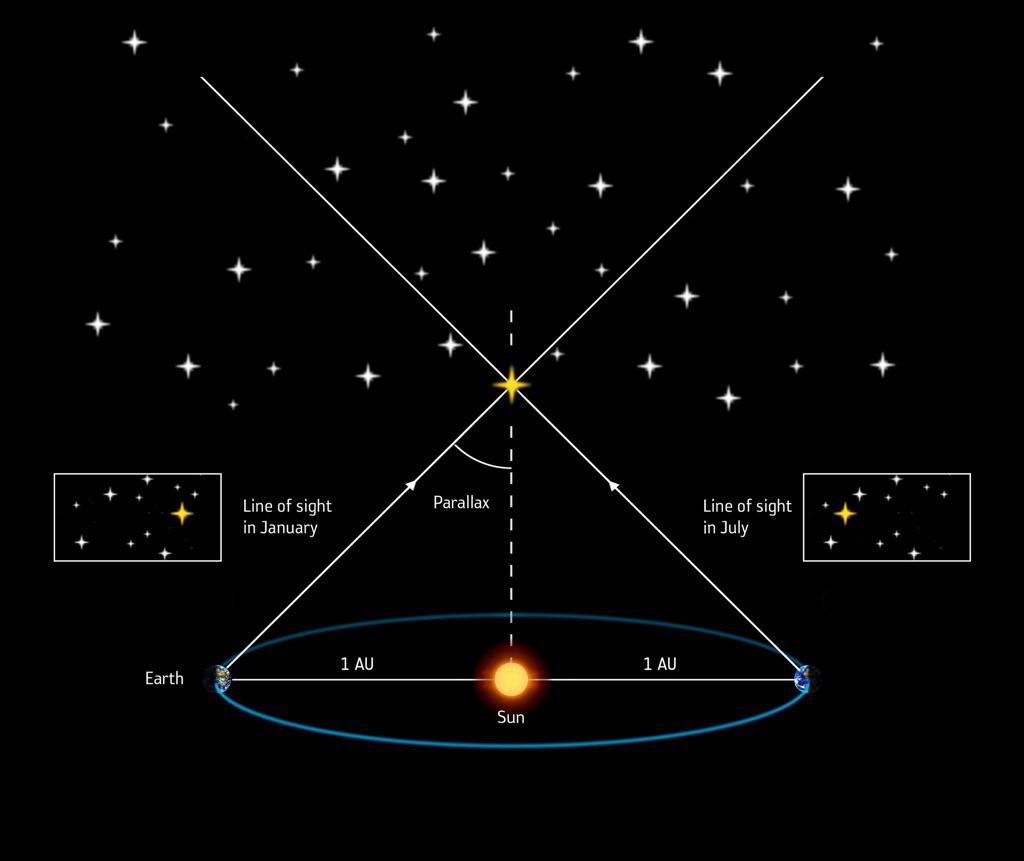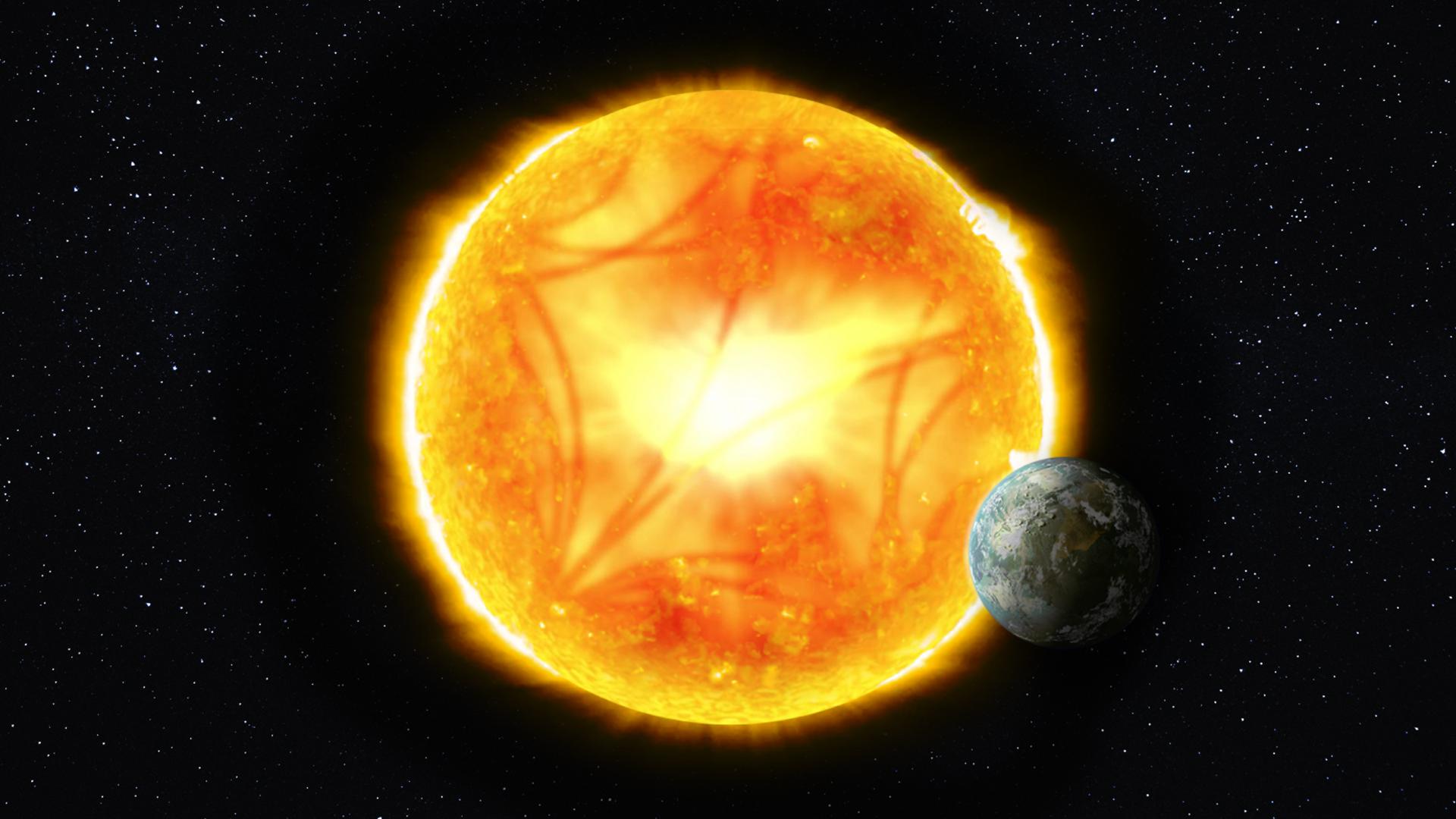
The Gaia satellite opens up a window into the near Universe, providing astronomic measurements on nearly two billion stars. ©ESA
A team of astronomers has used asteroseismology, or the study of stellar oscillations, to accurately measure the distance of stars from the Earth. Their research examined thousands of stars and checked the measurements taken during the Gaia mission to study the near Universe.
For most of us, the countless bright spots in the nighttime sky all seem to be stars. But in fact, some of those spots are actually planets, or distant suns, or even entire galaxies located billions of light years away. Just what you're looking at depends on how far it is from Earth. That's why measuring the exact distance to celestial objects is such an important goal for astronomers - and one of the biggest challenges they're currently tackling.
It was with this in mind that the European Space Agency (ESA) launched the Gaia mission ten years ago. Data collected by the Gaia satellite are opening up a window into the near Universe, providing astronomic measurements - such as position, distance from the Earth and movement - on nearly two billion stars.
At EPFL, the Standard Candles and Distances research group headed by Prof. Richard Anderson is aiming to measure the current expansion of the Universe and sees Gaia as a valuable tool. "Gaia increased by a factor of 10,000 the number of stars whose parallaxes are measured thanks to a massive gain in accuracy over its predecessor, the ESA Hipparcos mission," he says. Today, scientists use parallaxes to calculate the distance to stars. This method involves measuring parallax angles, with the help of the satellite, through a form of triangulation between Gaia's location in space, the Sun and the star in question. The farther away a star, the more difficult the measurement because parallax gets smaller the larger the distance.

Despite the resounding success of Gaia, the measurement of parallax is complex, and there remain small systematic effects that must be checked and corrected in order for Gaia parallaxes to reach their full potential. This is what scientists from EPFL and the University of Bologna, in Italy, have been working on, through calculations performed on over 12,000 oscillating red giant stars* - the biggest sample size and most accurate measurements to date.
"We measured the Gaia biases by comparing the parallaxes reported by the satellite with parallaxes of the same stars that we determined using asteroseismology," says Saniya Khan, a scientist in Anderson's research group and the lead author of a study published today in Astronomy & Astrophysics.
Stellar earthquakes
In the same way that geologists study the Earth's structure using earthquakes, astronomers use asteroseismology, and specifically stars' vibrations and oscillations, to glean information about their physical properties. Stellar oscillations are measured as tiny variations in light intensity and translated into sound waves, giving rise to a frequency spectrum of these oscillations.
"The frequency spectrum lets us determine how far away a star is, enabling us to obtain asteroseismic parallaxes," says Khan. "In our study, we listened to the 'music' of a vast number of stars - some of them 15,000 light-years away!"

To turn sounds into distance measurements, the research team started with a simple fact. The speed with which sound waves propagate across space depends on the temperature and density of the star's interior. "By analyzing the frequency spectrum of stellar oscillations, we can estimate the size of a star, much like you can identify the size of a musical instrument by the kind of sound it makes - think of the difference in pitch between a violon and a cello," says Andrea Miglio, a full professor at the University of Bologna's Department of Physics and Astronomy and the study's third author.
Sophisticated analyses
Having thus calculated a star's size, the astronomers then determined its luminosity and compared this figure to the luminosity perceived here on Earth. They coupled this information with temperature and chemical-composition readings obtained from spectroscopy and ran these data through sophisticated analyses to calculate the distance to the star. Finally, the astronomers compared the parallaxes obtained in this process with those reported by Gaia in order to check the accuracy of the satellite's measurements.
"Asteroseismology is the only way we can check Gaia's parallax accuracy across the full sky - that is, for both low- and high-intensity stars," says Anderson. And the future of this field is bright, as Khan outlines:
"Upcoming space missions like TESS and PLATO intended to detect and survey exoplanets will employ asteroseismology and deliver the required datasets across increasingly large regions of the sky. Methods similar to ours will therefore play a crucial role in improving Gaia's parallax measurements, which will help us pinpoint our place in the Universe and benefit a plethora of subfields of astronomy and astrophysics."
*Research published in Astronomy & Astrophysics in August 2023: https://www.aanda.org/10.1051/0004-6361/202346196






